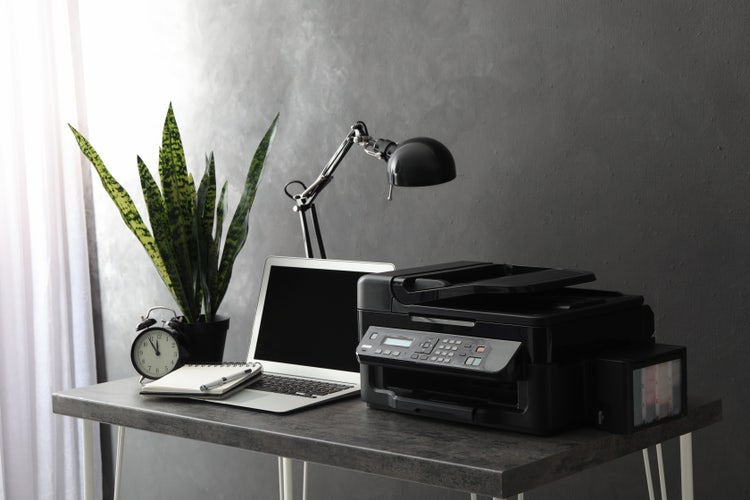There are trillions of PDFs worldwide, making it one of the most popular file formats. Aided by the explosive growth of the internet, it has become the de facto standard of electronic document exchange. Apart from being a document format, PDF also serves as a PDL (Page Description Language), a language for describing the appearance of pages that a screen can understand (to display) or a printer can understand (to print).
Small businesses and individuals use resource-constrained (low end) A4 printers to help get their work done, but their expectations about how they print are changing in a few ways:
- : Users are now more quality conscious than before, and printer manufacturers must match their expectations. According to a recent survey conducted by Adobe, about 68% of users consider print quality an essential criterion when purchasing a printer.
- : The type and number of devices available to users have increased. In addition to a desktop, users now have more than one mobile or tablet they can print from, and the share of printing from these devices is increasing.
- : We are moving towards a world without printer drivers, and there are many different print paths available today on top of the traditional driver path.
The implications of these developments are a need to address the increasing number of ways we print documents while maintaining the consistency of output and achieving the quality standards acceptable to the customer. The document format of the file to be printed has a significant role in such scenarios. PDF is the ideal PDL to address these new requirements from the home office to the enterprise.
The emergence of driverless printing
The technological advancements in the past decade have led to a boom in digital and print content creation. More users are now familiar with applications that let them create content, which has increased the complexity of the type of content. When files go to print, they are converted into a PDL. Therefore, such complex content must be preserved and delivered to the printer accurately for the best output quality. PDF is the only PDL equipped and suitable for this requirement as it is both a source file format and a PDL and embeds all rendering information inside it. With PDF as a PDL, your printer devices can achieve the best possible output quality with high fidelity.
Traditionally, print jobs were created primarily via a desktop machine, and users had to install a printer driver specific to their printer device. With the rapid penetration of mobile devices having increasing processing power, faster internet speeds, rising number of documents residing on cloud storages, and a new hybrid workspace, new print paths have emerged today along with a growing requirement for 'Driverless Printing’ — being able to print on a given printer without having to install a specific driver. PDF is the PDL of choice for driverless print paths today. All driverless print paths, including Mopria, AirPrint, IPP standard, etc., support PDF. Your devices can support any print path if the printer supports PDF.
PDF drives printing consistency and reliability
When a user creates a document for printing, they expect the printing process to be WYSIWYG (What-You-See-Is-What-You-Get), i.e., the print output will appear the same as it does on the screen regardless of how and on what device it gets printed. This expectation is often not met in today's world, as different printers support different PDLs, and the conversion process for each is different. This reality creates inconsistencies in rendering, which could be in the form of formatting differences, placement differences, color reproduction, or content not printed at all. Due to these inconsistencies, the same file printed on one printer may look different when it is printed on another printer. As users print from home and office in today's hybrid scenario, they want their print output to be consistent. PDF is the only way to ensure a constant outcome for your users across your devices.
PDF is the ideal format for printing because it can be easily transferred between machines without extra processing. The PDF print path is more efficient as the PDF is significantly smaller than a raster file for transferring over a network. The PDF path offers extra benefits for enhancing the content and keeping it secure. For instance, it's possible to improve the resolution of a blurry image in a document before printing. Additionally, PDF supports Digital Rights Management (DRM), so if a protected PDF reaches a printer, its permissions are interpreted, and actions are taken accordingly within the device.
Future proofing your print jobs
PDF is an ISO standard which makes it a future-proof PDL. As a result, you can be assured of continuous development and support and leverage new print-related capabilities as they get added into PDF. As we embrace the change in print behavior and cater to the increased expectations around the quality and consistency of print in the A4 segment, we recommend that printer devices of the future support PDF as a PDL. Adobe enables printer manufacturers with the market-leading PDF interpretation technology worldwide including Adobe Embedded Print Engine (AEPE) and continues to innovate to cater to future requirements. To learn more about the growing relevance of PDF technology in printing, download our IDC Analyst Connection Whitepaper here.





